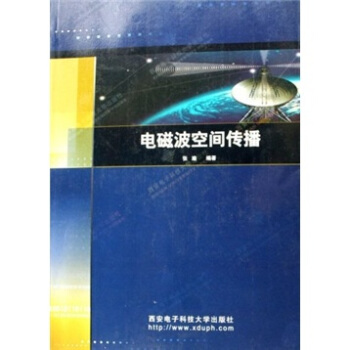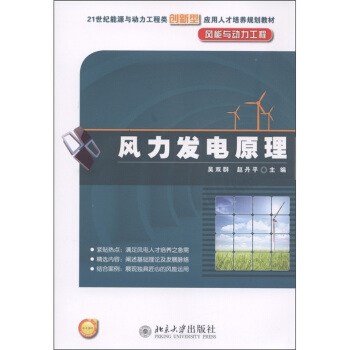

具体描述
内容简介
《半单群的表示论(第1卷)》是一部经典的著作,分为上下两卷,前十章为上卷,后六章为下卷。书中讲述半单李群表示理论的方式给出了本科目的精华,符合学习的自然规律。定理陈述地相当详细,增加了许多经典的解释性例子。本章末都有习题,对于学习研究生和科研工作者相当有用。目次:理论概述;su(2),su(2,r)和su(2,c)表示论;向量和通用包络代数;紧李群表示论;非紧群的理论;全纯离散系列;导出表示论;可允许表示论;离散系列的结构;全局性质;plancherel公式;不可约表示论;最小k型;酉表示;附录:李群的基本理论;偏微分方程的常规奇异点;经典群的根和受限根。目录
preface to the princeton landmarks in mathematics editionpreface
acknowledgments
chapter i. scope of the theory
1.the classical groups
2.cartan decomposition
3.representations
4.concrete problems in representation theory
5. abstractModel theory for compact groups
6.application of the abstractModel theory to lie groups
7.problems
chapter ii. representations of su(2), sl(2, r), and sl(2, c)
1.the unitary trick
2.irreducible finite-dimensional complex-linear representations of si(2, c)
3.finite-dimensional representations of s1(2, c)
4.irreducible unitary representations of sl(2, c)
5.irreducible unitary representations of sl(2, r)
6.use of su(1, 1)
7.plancherel formula
8.problems
chapter iii. c∞ vectors and the universal enveloping algebra
1.universal enveloping algebra
2.actions on universal enveloping algebra
3.c∞vectors
4.gatrding subspace
5.problems
chapter iv. representations of compact lie groups
1.examples of root space decompositions
2.roots
3.abstractModel root systems and positivity
4.weyl group, algebraically
5.weights and integral forms
6.centalizers of tori
7.theorem of the highest weight
8.verma modules
9.weyl group, analytically
10.weyl character formula
11.problems
chapter v. structure theory for noncompact groups
1.cartan decomposition and the unitary trick
2.iwasawa decomposition
3.regular elements, weyl chambers, and the weyl group
4.other decompositions
5.parabolic subgroups
6.integral formulas
7.borel-weil theorem
8.problems
chapter vi. holomorphic discrete series
1.holomorphic discrete series for su(1, 1)
2.classical bounded symmetric domains
3.harish-chandra decomposition
4.holomorphic discrete series
5.finiteness of an integral
6.problems
chapter vii. induced representations
1.three pictures
2.elementary properties
3.bruhat theory
4.formal intertwining operators
5.gindikin-karpelevi formula
6.estimates on intertwining operators, part i
7.analytic continuation of intertwining operators, part i
8.spherical functions
9.finite-dimensional representations and the h function
10.estimates on intertwining operators, part ii
11.tempered representations and langlands quotients
12.problems
chapter viii. admissible representations
1.motivation
2.admissible representations
3.invariant subspaces
4.framework for studying matrix coefficients
5.harish-chandra homomorphism
6.infinitesimal character
7.differential equations satisfied by matrix coefficients
8.asymptotic expansions and leading exponents
9.first application: subrepresentation theorem
10.second application: analytic continuation of interwining operators, part ii
11.third application: control of k-finite z(gc)-finite functions
12.asymptotic expansions near the walls
13.fourth application: asymptotic size of matrix coefficients
14.fifth application: identification of irreducible tempered representations
15.sixth application: langlands classification of irreducible admissible representations
16.problems
chapter ix. construction of discrete series
1.infinitesimally unitary representations
2.a third way of treating admissible representations
3.equivalent definitions of discrete series
4.motivation in general and the construction in su(1, 1)
5.finite-dimensional spherical representations
6.duality in the general case
7.construction of discrete series
8.limitations on k types
9.lemma on linear independence
10.problems
chapter x. global characters
1.existence
2.character formulas for sl(2, r)
3.induced characters
4.differential equations
5.analyticity on the regular set, overview and example
6.analyticity on the regular set, general case
7.formula on the regular set
8.behavior on the singular set
9.families of admissible representations
10.problems
chapter xi. introduction to plancherel formula
1.constructive proof for su(2)
2.constructive proof for sl(2, c)
3.constructive proof for sl(2, r)
4.ingredients of proof for general case
5.scheme of proof for general case
6.properties of fi
7.hirais patching conditions
8.problems
chapter xii. exhaustion of discrete series
1.boundedness of numerators of characters
2.use of patching conditions
3.formula for discrete series characters
4.schwartz space
5.exhaustion of discrete series
6.tempered distributions
7.limits of discrete series
8.discrete series of m
9.schrnids identity
10.problems
chapter xiii. plancherel formula
1.ideas and ingredients
2.real-rank-one groups, part i
3.real-rank-one groups, part ii
4.averaged discrete series
5.sp (2, r)
6.general case
7.problems
chapter xiv. irreducible tempered representations
1.sl(2, r) from a more general point of view
2.eisenstein integrals
3.asymptotics of eisenstein integrals
4.the η functions for intertwining operators
5.first irreducibility results
6.normalization of intertwining operators and reducibility
7.connection with plancherel formula when dim a = 1
8.harish-chandras completeness theorem
9.r group
10.action by weyl group on representations of m
11.multiplicity one theorem
12.zuckerman tensoring of induced representations
13.generalized schmid identities
14.inversion of generalized schmid identities
15.complete reduction of induced representations
16.classification
17.revised langlands classification
18.problems
chapter my. minimal k types
1.definition and formula
2.inversion problem
3.connection with intertwining operators
4.problems
chapter xvi. unitary representations
1.sl(2, r) and sl(2, c)
2.continuity arguments and complementary series
3.criterion for unitary representations
4.reduction to real infinitesimal character
5.problems
appendix a: elementary theory of lie groups
1.lie algebras
2.structure theory of lie algebras
3.fundamental group and covering spaces
4.topological groups
5.vector fields and submanifolds
6.lie groups
appendix b: regular singular points of partial differential equations
1.summary of classical one-variable theory
2.uniqueness and analytic continuation of solutions in several variables
3.analog of fundamental matrix
4.regular singularities
5.systems of higher order
6.leading exponents and the analog of the indicial equation
7.uniqueness of representation
appendix c: roots and restricted roots for classical groups
1.complex groups
2.noncompact real groups
3.roots vs. restricted roots in noncompact real groups
notes
references
index of notation
index
前言/序言
用户评价
作为一名经验丰富的代数表示论研究者,我对《半单群的表示论(第1卷)》的期待远不止于基础知识的梳理。我更关注的是作者在理论构建上的新颖性和深度。从我目前对本书的初步印象来看,第一卷似乎在为后续章节中更复杂的表示理论奠定基石,例如,它很可能在引入和讨论半单群的分类、结构常数、以及一些基本的表示构造方法。我尤其对作者是否能在此卷中就半单群的“根系”和“Weyl群”等重要概念进行清晰的定义和初步的性质探讨感到好奇。这些概念是理解更高维度表示理论的关键。如果第一卷能够为我提供一个清晰的、具有前瞻性的理论框架,那么它将极大地简化我后续阅读更专业的文献时的理解难度。我希望书中不仅能提供严谨的数学定义,更能揭示这些概念背后的几何直观和代数意义,从而帮助我们更深入地理解半单群表示的本质。
评分对于《半单群的表示论(第1卷)》这本书,我从一个可能与主流研究稍有不同的角度去评价。作为一名热衷于探索数学与其他学科交叉应用的学者,我一直关注代数结构在物理学、密码学等领域的身影。半单群作为一类重要的代数对象,在这些领域中有着不可忽视的应用。因此,我非常期待这本书的第一卷能够在我初步阅读中,为我揭示半单群的基本性质,并可能暗示一些它们在特定应用场景下的结构特征。例如,它是否会在介绍半单群的定义时,就隐约透露出其在对称性问题中的重要性?或者,在讨论其分解性质时,是否会为理解更复杂的系统提供线索?我希望第一卷不仅仅是纯粹的理论堆砌,而是能为我们提供一种“看”半单群的视角,这种视角能够让我们联想到它们在实际问题中的潜在价值。即便这本书侧重于理论本身,我也会从中寻找那些可能启发我进行跨学科研究的“种子”。
评分作为一名长期在代数研究领域摸爬滚打的学者,我一直对有限单群的结构以及它们的表示论着迷不已。当得知《半单群的表示论(第1卷)》出版的消息时,我便迫不及待地入手了。虽然书中内容博大精深,我尚未能完全消化,但仅从其对半单群概念的引入和基础理论的梳理,我就已经感受到了作者在编排上的匠心独运。第一卷显然是为整个系列的深入探讨奠定坚实的基础,从我初步的阅读体验来看,它并没有直接跳入复杂的证明和高深的定理,而是循序渐进地引导读者理解半单群的定义、基本性质以及它们在更广泛的代数结构中所扮演的角色。这对于初学者或是希望系统梳理这部分知识的同行而言,无疑是一份宝贵的财富。我尤其欣赏作者在引入一些抽象概念时,所提供的详尽的背景解释和概念辨析,这使得我在阅读过程中不会感到突兀,而是能够逐步建立起清晰的认知图景。我相信,随着我对这本书更深入的研读,必将对半单群的表示论有更深刻的理解,为我后续的研究提供强有力的理论支撑。
评分这本书的出现,对于我这样一名刚刚接触表示论领域的学生来说,简直是及时雨。我之前阅读过一些零散的资料,但总是感觉难以形成一个完整的体系。《半单群的表示论(第1卷)》恰好填补了这一空白。从我粗略翻阅的章节来看,作者在概念的引入上非常细致,将一些抽象的数学概念用易于理解的方式呈现出来。例如,对于“半单性”这个核心概念,书中通过多角度的阐述和不同数学工具的辅助,让我这个初学者也能逐渐领悟其精髓。此外,书中穿插的例子也极具启发性,它们不仅帮助我巩固了理论知识,更让我看到了抽象理论在实际问题中的应用。我特别期待书中能够对一些经典的半单群,如李群中的特殊线性群、正交群等,进行详尽的表示论介绍,这将是我后续深入学习的重点。虽然目前我还在初步探索阶段,但这本书的编写风格和内容深度,已经让我对后续的学习充满了信心。
评分从我多年在学术界浸淫的经验来看,一本好的数学专著,其价值不仅仅在于内容本身的深度,更在于它如何引导读者一步步深入。对于《半单 পরিসংখ্যান群的表示论(第1卷)》而言,我希望它的第一卷能做到这一点。我期待书中在介绍半单群的定义和基本性质时,能够采用一种既严谨又不失启发性的语言。我尤其关注作者如何处理那些看起来非常抽象的概念,例如,是否会通过一些具体的例子,或者与更熟悉的代数结构(如群、环、域)的联系,来帮助读者建立直观的理解。如果书中能够展现出一种“循序渐进”的教学逻辑,而非简单地罗列定理和证明,那么它将极大地提升读者学习的效率和乐趣。我设想,在读完第一卷后,我能够对半单群有一个初步但扎实的认识,并为理解后续更复杂的表示理论打下坚实的基础,而不是感到知识的断层或理解的障碍。
评分怪异的名字怪异的名字
评分书不错,服务也不错,满意
评分书不错,服务也不错,满意
评分表示论的经典之作,易读有趣
评分书不错,服务也不错,满意
评分对学习研究专业领域有价值
评分新的 没有拆封过,发货快
评分印刷和纸张一般。
评分怪异的名字怪异的名字
相关图书
本站所有内容均为互联网搜索引擎提供的公开搜索信息,本站不存储任何数据与内容,任何内容与数据均与本站无关,如有需要请联系相关搜索引擎包括但不限于百度,google,bing,sogou 等
© 2025 book.coffeedeals.club All Rights Reserved. 静流书站 版权所有




















